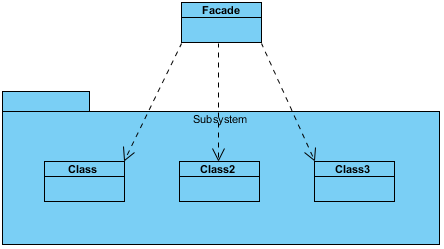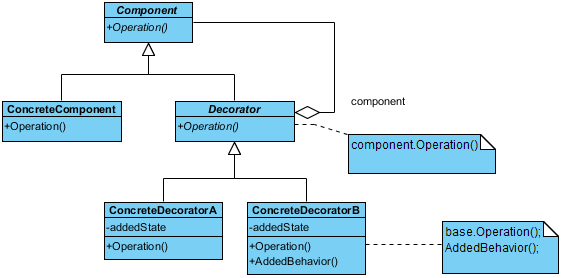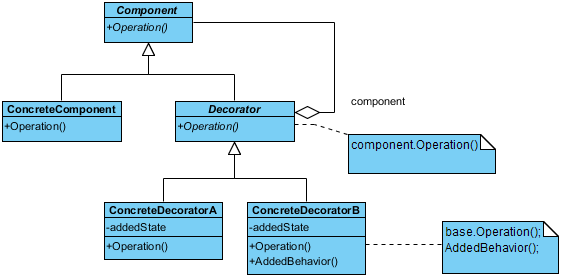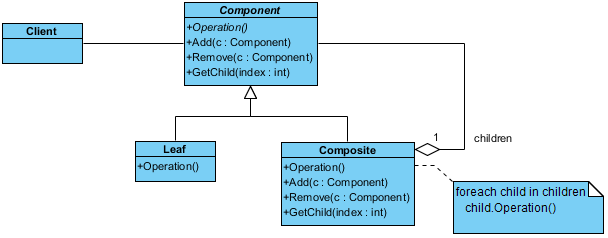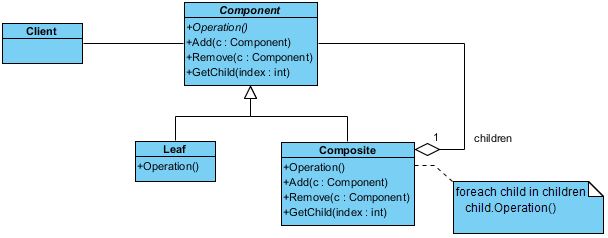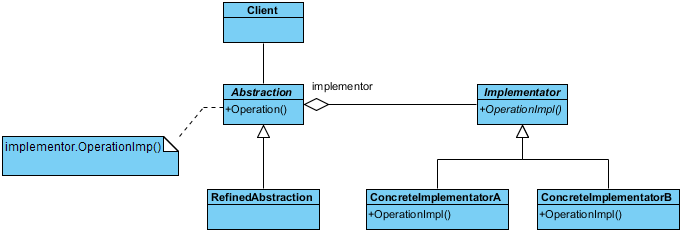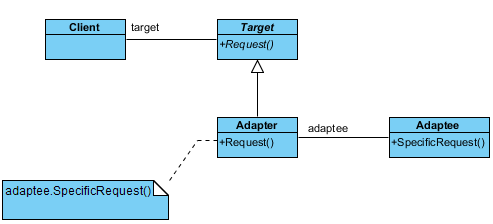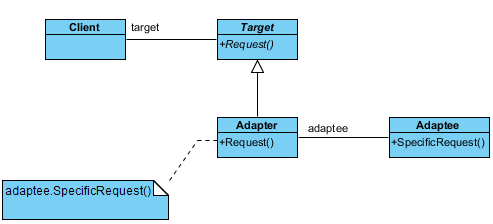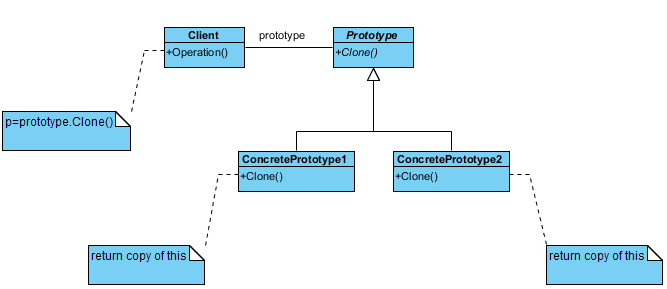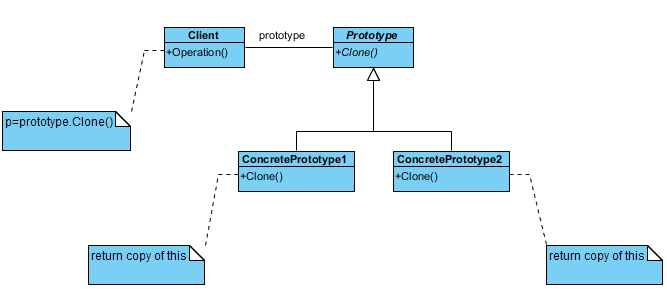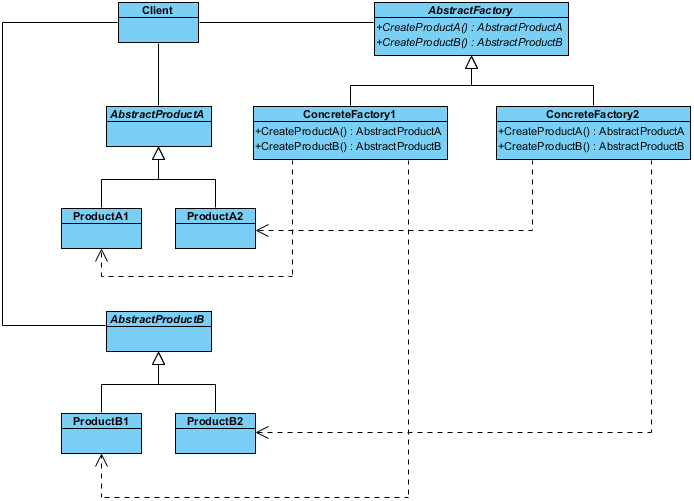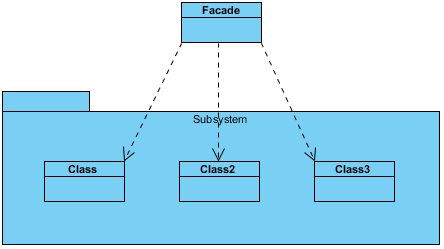
This is a UML class diagram for the Facade design pattern.
Purpose
Supplies a single interface to a set of interfaces within a system.
Use When
- A simple interface is needed to provide access to a complex system.
- There are many dependencies between system implementations and clients.
- Systems and subsystems should be layered.
Import into your Project
Open diagram in Visual Paradigm [?]Copy the URL below, paste it in the Open Project windows of Visual Paradigm and press Enter to open it |
Posted by:
